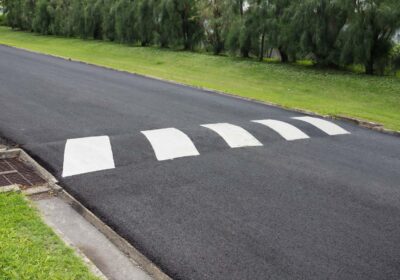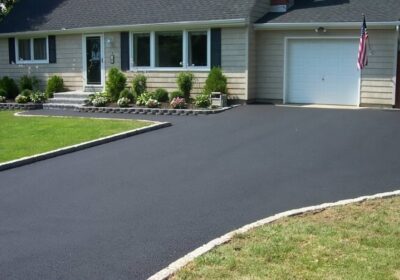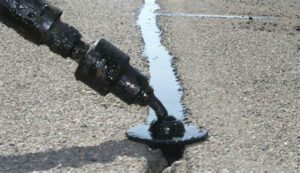How To Apply Crack Sealers On Asphalt In San Diego?
How To Apply Crack Sealers On Asphalt In San Diego?
Maintaining your asphalt driveway or pavement is crucial to ensure its longevity and appearance. One common issue that surfaces over time is cracks in the asphalt. These cracks not only detract from the aesthetics of your property but can also lead to more extensive damage if left untreated. Fortunately, crack sealers are readily available and offer an effective solution to address this issue. In this article, we’ll guide you through the steps of applying crack sealers on asphalt to keep your surfaces in excellent condition.
Step 1: Gather the Necessary Tools and Materials
Before you begin the crack sealing process, make sure you have all the required tools and materials ready. You’ll need:
- Crack sealer: Choose the appropriate type of crack sealer for your asphalt surface. There are different options available, including hot-applied and cold-applied sealers.
- Crack filler: Use a quality crack filler to prepare the cracks for sealing.
- Safety gear: Wear protective gear such as gloves, safety glasses, and a dust mask to ensure your safety during the application.
- Cleaning tools: You’ll need a broom, a wire brush, or an air compressor to clean the cracks thoroughly.
- Melter or applicator: Depending on the type of sealer you’ve chosen, you may need a melter or applicator equipment.
Step 2: Clean and Prepare the Cracks
Cleanliness is vital for the success of crack sealing. Start by using a broom to remove any loose debris or dirt from the cracks. For a more thorough clean, consider using a wire brush or an air compressor to ensure there are no loose particles left. The cleaner the cracks, the better the sealant will adhere.
Step 3: Fill the Cracks
Next, fill the cleaned cracks with a crack filler. Pour the filler into the cracks, slightly overfilling them. Use a putty knife or a trowel to level and smooth the filler, ensuring it’s flush with the surrounding asphalt surface. Allow the filler to cure according to the manufacturer’s instructions, usually for at least 24 hours.
Step 4: Apply the Crack Sealer
Now that the cracks are filled and cured, it’s time to apply the crack sealer. If you’re using a hot-applied sealer, follow these steps:
- Heat the sealer according to the manufacturer’s instructions using a melter or applicator.
- Pour the melted sealer directly over the cracks, ensuring it covers the filled areas.
- Use a squeegee or a sealant applicator tool to spread the sealer evenly, feathering it out to blend with the surrounding asphalt.
For cold-applied sealers, follow the manufacturer’s instructions on application, which usually involves simply pouring and spreading the sealer directly onto the cracks.
Step 5: Allow for Proper Curing
Allow the crack sealer to cure as per the manufacturer’s guidelines. This may take a few hours to a few days, depending on the type of sealer used and weather conditions. It’s essential to keep the area free from traffic during the curing process to ensure the best results.
FAQs
How Often Should I Apply Crack Sealers On My Asphalt Surface?
Crack sealers should be applied as soon as cracks appear, and then periodically to prevent further damage. In general, it’s recommended to perform crack sealing every 1-3 years, depending on the condition of your asphalt and local weather conditions.
Can I Apply Crack Sealers Myself, Or Should I Hire A Professional?
While it’s possible to apply crack sealers on your own, hiring a professional asphalt contractor is often advisable for larger or more complex projects. Professionals have the experience and equipment needed to ensure a high-quality and long-lasting seal.
Are There Different Types Of Crack Sealers, And How Do I Choose The Right One?
Yes, there are different types of crack sealers, including hot-applied and cold-applied options. The choice depends on factors such as the severity of the cracks, weather conditions, and personal preference. Consult with a local asphalt expert or read product labels for guidance on selecting the right sealer for your specific needs.
Conclusion
Cracks in your asphalt surface can lead to more extensive damage and deteriorate the appearance of your property. Applying crack sealers is a cost-effective way to address this issue and extend the life of your asphalt. By following the steps outlined in this guide, you can effectively apply crack sealers and protect your asphalt surfaces. Remember to choose the right type of sealer, follow safety precautions, and adhere to manufacturer guidelines for the best results in maintaining your asphalt pavement.
For more information regarding our services, contact Super Asphalt Of San Diego at 619-571-4324.
Related Posts

5 Reasons Why Asphalt Speed Bumps Improve Parking Lot Safety In San Diego
5 Reasons Why Asphalt Speed Bumps Improve Parking Lot Safety In San Diego Curious about enhancing…

3 Reasons to Seal Minor Cracks in Your Asphalt Driveway In San Diego
5 Benefits of Choosing Asphalt Driveways In San Diego Did you know that installing an…

5 Benefits of Choosing Asphalt Driveways In San Diego
5 Benefits of Choosing Asphalt Driveways In San Diego Did you know that installing an asphalt…


Leave a Reply